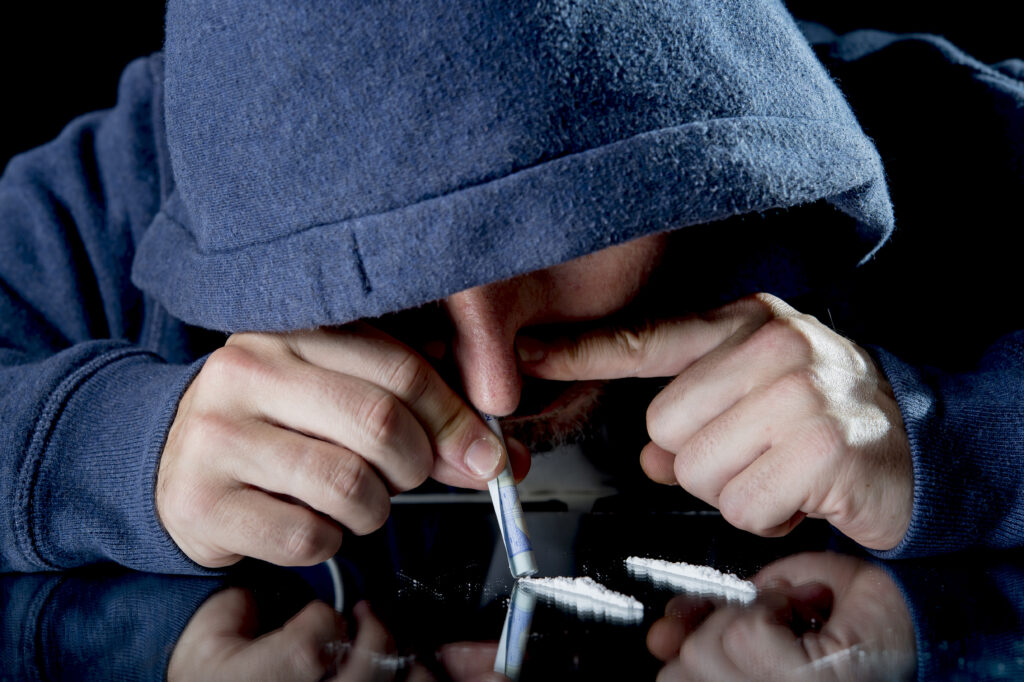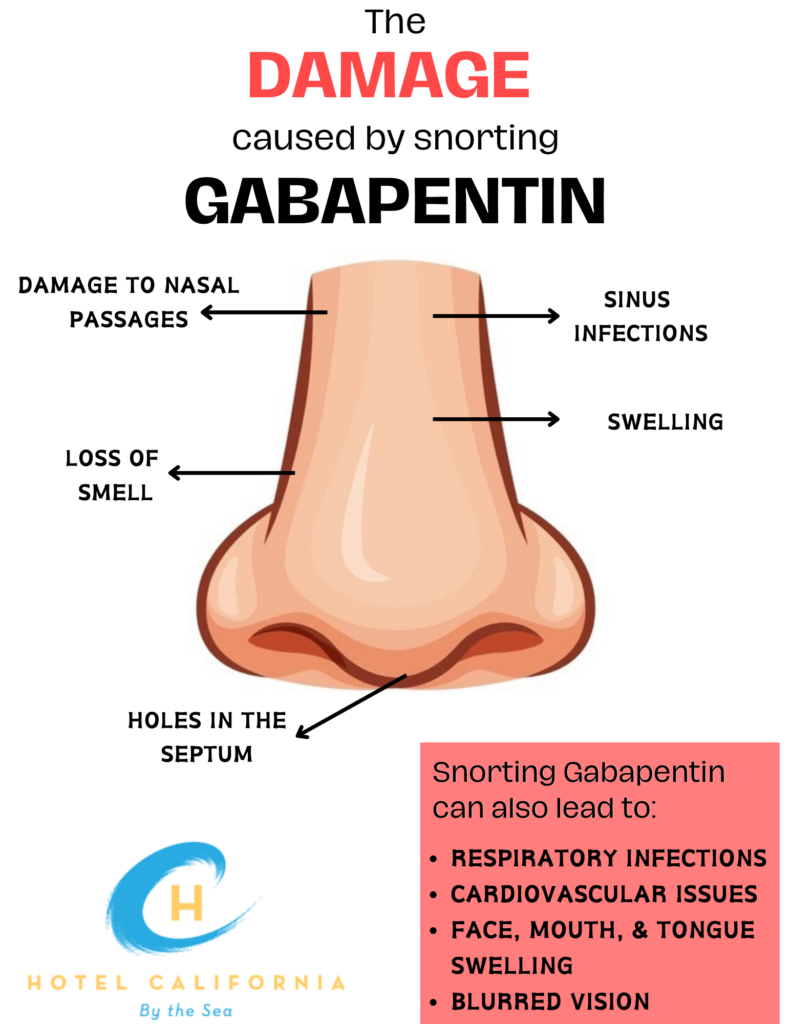What are the effects of Snorting Gabapentin?
Gabapentin is fast becoming one of the most prescribed medications in the U.S. According to the Drug Enforcement Administration, gabapentin prescription rates have almost doubled from 2011 to 2017. In 2021, GoodRx reported that gabapentin was the 6th most prescribed medication drug in the nation. Gabapentin is a medication used to treat epilepsy and pain related to nerve damage, also known as neuropathy. Because it is becoming so popular, research is also finding more and more people are reportedly abusing the drug and developing dependence and addiction.
The drug was initially approved for the treatment of epilepsy and then later approved for analgesic purposes, post-herpetic neuralgia and neuropathic pain. In fact, neuropathic pain affects an estimated 8% of the general population and gabapentin is almost always prescribed to treat the condition. It is categorized in its own class of drugs called gabapentinoids and is known to be less addictive than opioids. Brand names of the drug include Gralise, Horizant and Neurontin. It comes in capsules, tablets, or other oral solutions.

Despite its limited approval use, gabapentin has the ability to treat a whole host of other ailments that medical providers have begun prescribing for off-label uses. This includes treating insomnia, seizures, drug and alcohol addiction, anxiety, symptoms of bipolar disorder, borderline personality disorder, vertigo, migraines and restless leg syndrome. Research estimates off-label usage ranges from 83-95% of all gabapentin drug use. Because of its ability to address multiple conditions, this has made gabapentin one of the most popular medications in the U.S.
Gabapentin has a chemical structure that is similar to the brain neurotransmitter gamma-aminobutyric acid (GABA). Like GABA, the drug also affects the body’s central nervous system. Gabapentin decreases overexcitement in the brain producing feelings of relaxation and calmness, which is helpful in treating conditions of involuntary movement such as seizures and nerve pain. It also produces feelings of relaxation, joy, ease of anxiety and ease of pain. The effects are not as intense as opioids, but can still result in drug dependence.
Gabapentin Misuse
Research has found that an estimated 1% of the general population misuses gabapentin. Gabapentin misuse in people with prescriptions is around 40-56%. And misuse among people who also abuse opioids is around 15-22%. The drug is not considered to be addictive, however, it does produce sedative properties where users can develop a dependence on the drug.
Misuse of gabapentin is using the drug for a purpose other than intended. This includes and is not limited to taking another person’s medication and taking prescribed or non-recommended methods of administration of gabapentin.
Abuse of gabapentin consists of persistent use of the drug despite resulting in negative consequences. Dependence on gabapentin is associated with the physical and psychological elements of abuse. This can include drug compulsion, substance withdrawal and drug tolerance.

Gabapentin is primarily misused for recreational purposes, a form of self-medication or for intentional self-harm. It produces a mild euphoria which users take to get high. It was created and is often prescribed as an alternative to opioid medications. Slang names for gabapentin include gabbies or johnnies.
The initial effects of gabapentin produce include mild euphoria, feelings of intoxication, calmness, relaxation, disassociation, alienation and lowered inhibitions. The general side effects of gabapentin misuse can include loss of coordination, difficulty speaking, insomnia, high blood pressure, elevated heart rate, tremors, confusion, disorientation, abnormal eye movements, vomiting, irritability, violent behavior, mania and panic attacks. It takes about 48 hours for the drug to be completely eliminated from the system.
It is also often misused with other substances such as opioids, benzodiazepines and alcohol. Abusing gabapentin usually results in the abuse of these other drugs. Polydrug use is a dangerous condition and can be especially dangerous when gabapentin and another substance are involved. Gabapentin is used to intensify the high of other drugs like opioids or to help alleviate the withdrawal symptoms of cocaine.
Check Your Insurance Coverage for FREE
Find out if your insurance covers addiction treatment in minutes. We accept most insurance!
Snorting Gabapentin
One of the ways users misuse gabapentin is by snorting the drug. Snorting any type of mind-altering substance generally leads to a higher risk of addiction due to the faster onset of effects and greater intensity of the high. Snorting gabapentin allows for the drug to bypass the digestive system and enter directly into the bloodstream. When snorting, the drug enters circulation through the mucous membranes and into the bloodstream. This produces effects more quickly. Within about 15 minutes of snorting gabapentin, the user will be able to feel the effects of the drug.
In a study about the misuse of snorting gabapentin from capsules, the users reportedly experienced a high similar to one that is felt after snorting cocaine. Snorting gabapentin is a common way users ingest the drug when they are abusing it.
However, this method of administration increases the risk of developing adverse reactions as well as increasing the risk of dependency and addiction. Snorting the drug also makes it more difficult for the user to determine whether or not they have had too much of the drug. This could lead to overdose.
Side effects of snorting gabapentin include mild euphoria, suicidal thoughts and ideation, respiratory depression, withdrawal symptoms, depression of the central nervous system and sedation.
Factors contributing to Gabapentin Abuse
One of the main factors contributing to the rise in gabapentin abuse is the availability of the drug. It is easily accessible as physicians are more likely to prescribe the medication over narcotics such as opioids because it is considered a safer and less addictive alternative. It is widely prescribed for off-label usage and it is generally not considered to be a controlled substance. This allows for ease of access. There are however a few states with restrictions on the drug. These states include Kentucky, Illinois, Ohio, Massachusetts, Minnesota, Tennessee, Virginia and Wyoming.
It is inexpensive and many people can get it for free or at a reduced price. On the illicit market, gabapentin often sells for less than a dollar each. Users take it to enhance the effects of heroin and when taken alone, can produce marijuana-like effects. It is also called the “cheap man’s high.”
Reach out to Hotel California by the Sea
We specialize in treating addiction and other co-occurring disorders, such as PTSD. Our Admissions specialists are available to walk you through the best options for treating your addiction.
Treatment for Gabapentin Abuse
Amid the opioid overdose crisis, gabapentin has also been showing up as an adjacent substance in reported overdose deaths. Although the anticonvulsant medication does not have addictive properties and is considered a low potential for abuse, there has been a steady increase in misuse of the drug. The misuse is often sparked by polydrug use with other substances and can lead to addiction.
Hotel California by the Sea provides substance use disorder treatment including an addiction to gabapentin. We provide treatment at all levels of care including detox, residential and outpatient. We offer unique evidence-based treatments such as CBT, DBT and EMDR therapy. Clients will receive individualized treatment plans. And we offer specialized care in treating co-occurring mental health conditions. At Hotel California by the Sea, we are dedicated to providing support and resources for our clients to overcome their addictions.
References:
https://www.ncbi.nlm.nih.gov/pmc/articles/PMC5573873/
https://www.statnews.com/2017/07/06/gabapentin-becomes-target-of-opioid-abuse/
https://www.addictionresource.net/blog/gabapentin-insufflation/
https://welevelup.com/addiction/snort-gabapentin/
https://zinniahealth.com/substance-use/gabapentin
https://www.addictioncenter.com/drugs/gabapentin/
https://zinniahealth.com/substance-use/gabapentin/side-effects
https://stateline.org/2018/05/10/abuse-of-opioid-alternative-gabapentin-is-on-the-rise/
